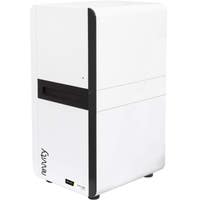Background
Spinal muscular atrophy (SMA) is a neuromuscular disease inherited in an autosomal recessive manner. It is characterized by muscle weakness and atrophy resulting from progressive degeneration and loss of the lower motor neurons in the spinal cord and the brain stem nuclei. The onset of weakness ranges from before birth to adolescence or young adulthood and life span varies from less than 6 months to normal.
Clinical
Childhood SMA is subdivided in into three clinical groups (types 1-3) on the basis of age of onset and clinical course. Sometimes, type 0 is used to describe a prenatal type of childhood SMA. Type 4 is a mild form that presents in adulthood. The classification was done before the advent of molecular diagnosis and it is now apparent that the phenotype of SMA associated with SMN1 pathogenic variants spans a broad continuum without clear definition of subtypes. However, the existing classification system is used for prognosis and management of the disease.
Testing
The molecular diagnosis of SMA consists of the detection of the absence of exon 7 of SMN1. Moreover, according to the current standard of care, the first diagnostic test for a patient suspected to have SMA should be the SMN gene deletion test.
Treatment
SMA patients often require comprehensive medical care involving multiple disciplines to manage the symptoms and help people with the condition have the best possible life. The field has recently seen major advances in clinical therapies, including new approved agents by US FDA in December 2016 and by European EMA in May 2017.
Inheritance
The incidence of SMA is approximately 1 in 10,000 live births and it is one of the leading genetic causes of infant death worldwide. SMA is caused by mutations in the survival motor neuron gene 1 (SMN1). The survival motor neuron gene (SMN) is composed of 9 exons, with a stop codon present near the end of exon 7 and it has been shown to be the primary spinal muscular atrophy–determining gene. Two almost identical SMN genes are present, the telomeric SMN1 gene, which is the SMA determining gene, and the centromeric SMN2 gene. Both copies of SMN1 exon 7 are absent in about 95% of affected patients, whereas small, more subtle mutations have been identified in the remaining affected patients.
References:
- ACOG Committee Opinion, Spinal Muscular Atrophy, 2009, reaffirmed 2014
- Prior and Finanger, Spinal Muscular Atrophy, GeneReviews, accessed on Oct, 2018
- Boardman, Young, Griffiths, Newborn screening for spinal muscular atrophy: the views of affected families and adults, Am J Med Genet, 2016
- Wang et al., Consensus Statement for Standard of Care in Spinal Muscular Atrophy, Journal of Child Neurology, 2007
- Lefebvre S, Burglen L, Reboullet S, et al. Identification and characterization of a spinal muscular atrophy-determining gene, Cell, 1995
- Prior TW, Spinal Muscular Atrophy Diagnostics, Journal of Child Neurology, 2007
- Wang et al., Consensus Statement for Standard of Care in Spinal Muscular Atrophy, Journal of Child Neurology, 2007





























